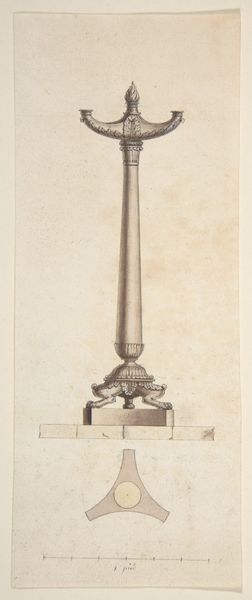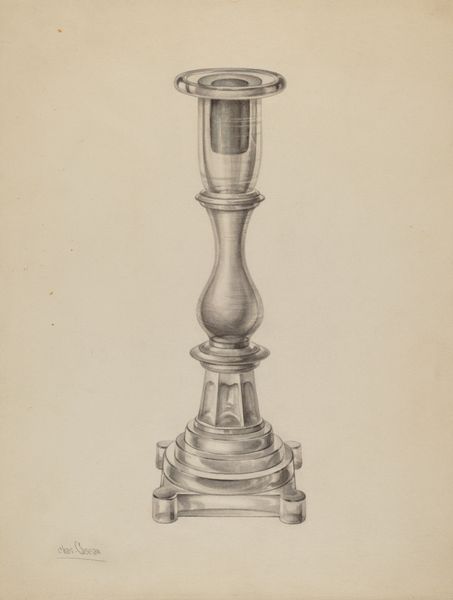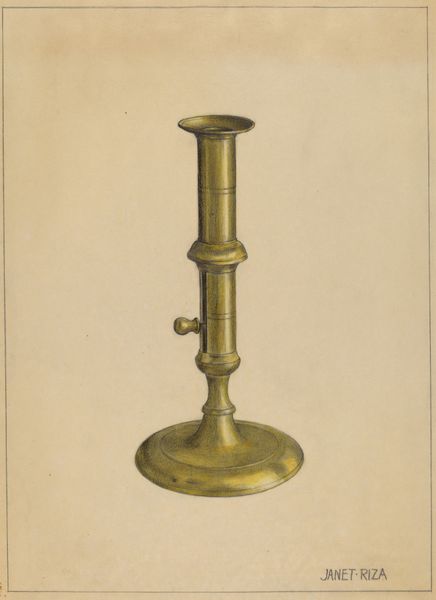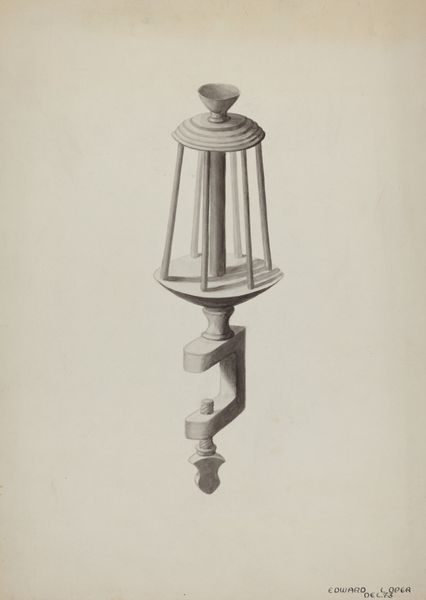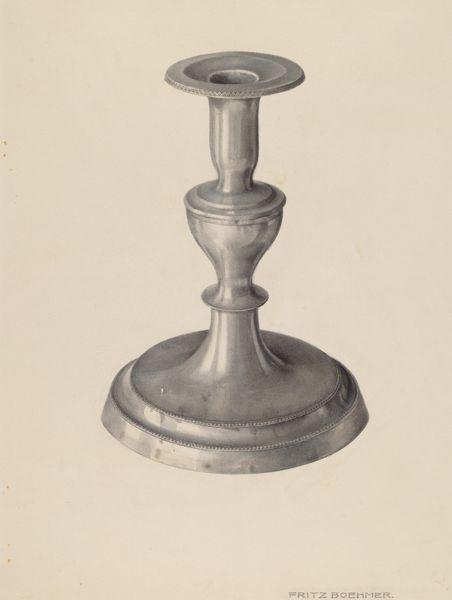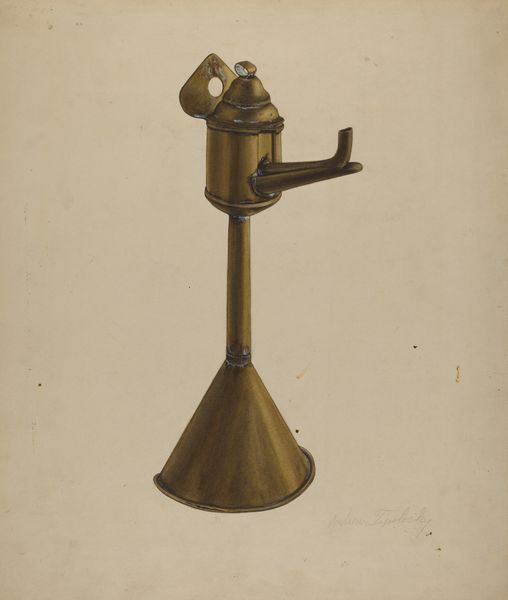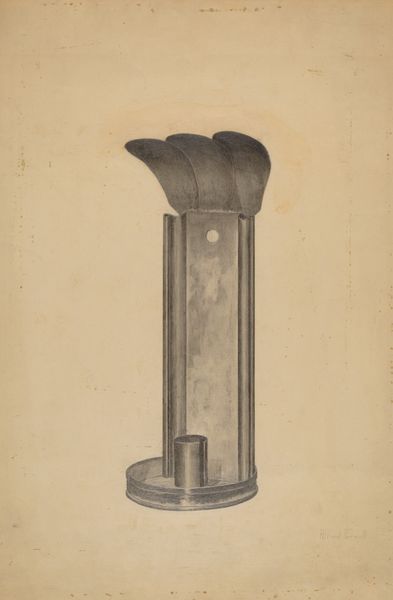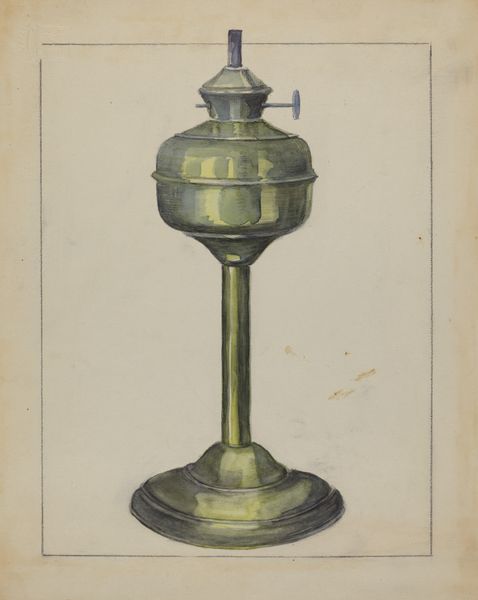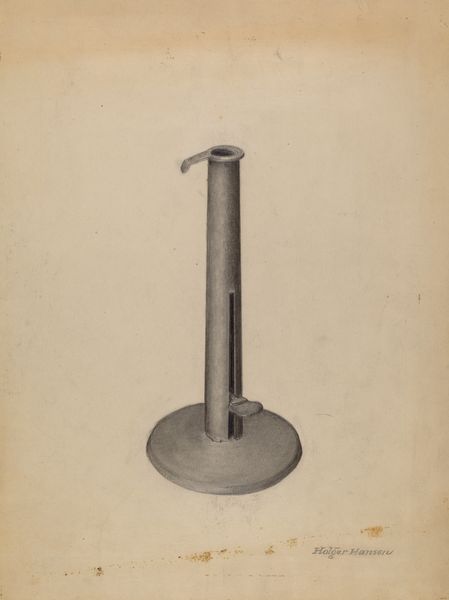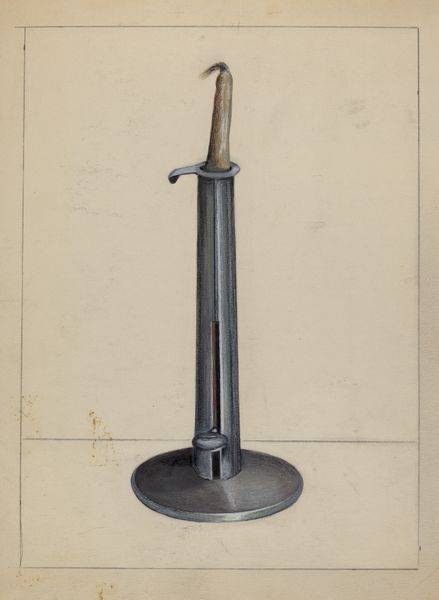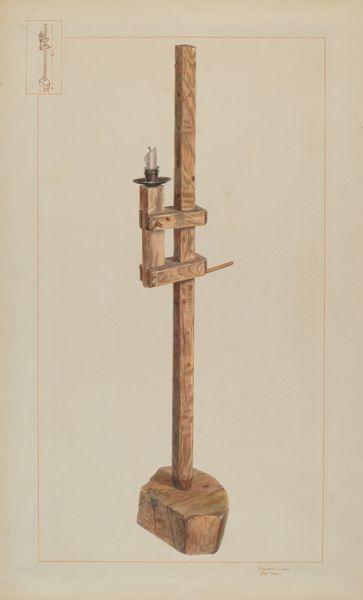
drawing, pencil
#
drawing
#
pencil
#
realism
Dimensions: overall: 48.2 x 22.8 cm (19 x 9 in.)
Copyright: National Gallery of Art: CC0 1.0
Curator: Let's turn our attention now to "Candlestick Double," a pencil drawing by Mary Fitzgerald created sometime between 1935 and 1942. Editor: It's stark, almost melancholic, isn't it? The soft gray tones give it a muted feel, like a memory fading at the edges. Curator: Fitzgerald was active during a time when realism and social commentary were becoming increasingly important. The candlestick, while seemingly mundane, takes on a different weight when you consider the economic hardship of the Depression era, doesn't it? Editor: Absolutely. Everyday objects like this become loaded symbols. Light, traditionally representing hope, here is dependent on wax – a resource, a commodity. How does access to light change based on race, class, or location at this time? Whose stories get to be illuminated, and whose are left in the dark? Curator: Exactly. The domestic sphere itself, so often relegated to the feminine, becomes a stage for understanding larger social and economic structures. It highlights how women navigated these tumultuous times, maintaining households under immense strain. Editor: It's a quietly defiant image, maybe. To portray this object with such deliberate precision suggests a will to preserve, to bear witness to a moment, even within constraints. You see two openings for candles, which may indicate hope of companionship. Does it say something about her personal relationships at this point in her life? Curator: That's a beautiful thought. The meticulous detail certainly draws you in. What strikes me is how Fitzgerald manages to elevate a simple object, granting it this… silent dignity. Editor: Yes, exactly. I appreciate the simplicity—a testament to finding meaning in the everyday. What choices are made during resource-scarce times to provide light for comfort, rituals, or necessities? Curator: A vital consideration. Fitzgerald encourages us to examine not just what is depicted, but the unspoken social realities it reflects. Editor: Indeed. The drawing illuminates the period by focusing our gaze on how one attempts to negotiate domestic space while holding space for oneself in a period of crisis.
Comments
No comments
Be the first to comment and join the conversation on the ultimate creative platform.

